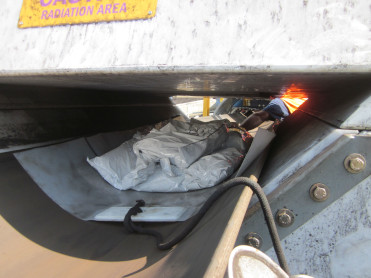
How are ETI analyzers calibrated /recalibrated?
ETI analyzers are calibrated using static samples before and after installation, and dynamic comparisons after commissioning.
Static Calibration uses samples from the materials normally seen in the existing process. Laboratory analysis is performed on the samples and a comparison is made with the analyzer results. Analyzer results are then adjusted to match the laboratory analysis. Dynamic Calibration makes comparisons to laboratory samples taken during operation, and is used to fine-tune the calibration.
The calibration process begins with a static calibration performed at the factory.
This ensures the device works properly and will perform as expected. With this calibration, ETI will be able to generate specific performance guarantees for the materials of interest analyzed. The static calibration is performed once more after the system is installed on-site. This takes into account the characteristics of the customer's conveyor belt as well as any effects from equipment installed around the analyzer. The analyzer is put into commission and a Static Calibration Report is submitted.
Finally, a dynamic calibration is performed.
The dynamic calibration consists of making comparisons between analyzer results and lab testing results while the system is in operation. Often no adjustments are needed, but this is the stage where any fine-tuning of the calibration will occur. A Dynamic Calibration Report is made after this step, and the calibration is considered complete. Periodic comparisons with laboratory sampling data are encouraged for the life of the unit.
Recalibration on a regular basis is not necessary.
The system is designed to work accurately and consistently as the sources reach their half-life. The only time a recalibration will be necessary is when the material characteristics have changed drastically, the conveyor belt has been replaced with another type, or if a system detector has been replaced. A recalibration may be through a combination of static and dynamic methods, or by a dynamic method only.

